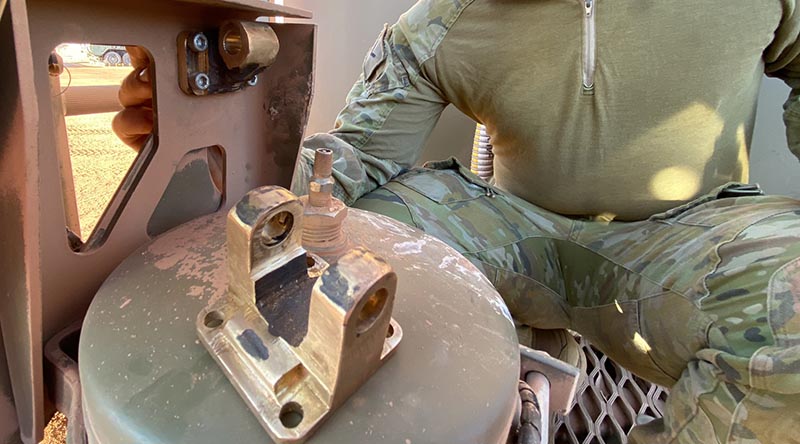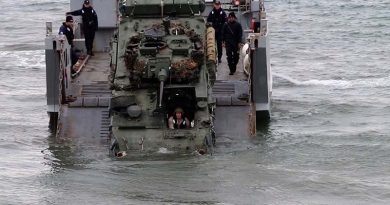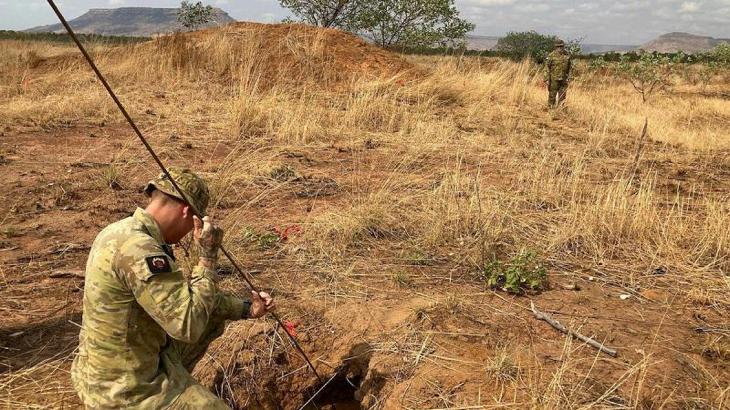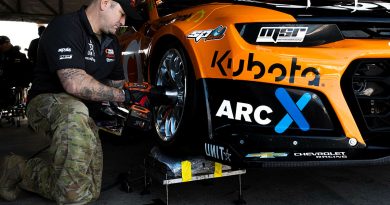Army successfully trial metal 3D printer out bush
Share the post "Army successfully trial metal 3D printer out bush"

The Australian Army has completed a successful two-week field trial of a WarpSPEE3D metal 3D printer at the Mount Bundey Training Area, Northern Territory.
CAPTION: A 3D-printed metal mounting bracket for a bulk fuel support module printed out bush at Mount Bundy Training Area. Photo supplied.
A team of Royal Australian Electrical and Mechanical Engineers (RAEME) soldiers from 1st Combat Service Support Battalion (1CSSB) designed, printed and finished a series of 3D printed parts in the field as case studies.
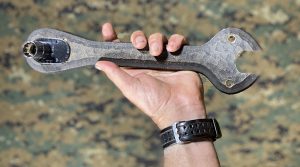
A spokesman said the trial proved metal 3D printing enabled by appropriate technical documentation and engineering processes could support the Army’s supply chain resilience and strengthen Australia’s sovereign capability.
Developed by SPEE3D, Australian award-winning manufacturer of metal additive manufacturing technology, WarpSPEE3D is the world’s first large-format metal 3D printer to use patented cold-spray technology.
The printer is capable of printing large metal parts up to 40kg at a record-breaking speed of 100grams per minute.
The process harnesses the power of kinetic energy, rather than relying on high-power lasers and expensive gasses, allowing 3D metal printing in the field, at an affordable cost.
Before the trial, the team conducted 3D printing training at Charles Darwin University, teaching them the skills they needed to design, print, heat treat, machine, test and install metal parts that may fail in the field and can be difficult to replace with existing supply chains.
In one of the case studies during the trial, the team printed a gunner’s ratchet.
This specialised multitool is currently used by Defence in the service of the M242 ASLAV chain gun.
During the trial, it was proven that the ratchet can be replaced on demand in the field with a version designed by 1CSSB personnel.
The 1CSSB design was 3D printed in under an hour and with a material cost of about $100.
Following success with the ratchet, 1CSSB designed and printed a metal mounting bracket for a bulk fuel support module which was not in the field-supply inventory.
The part took 30 minutes to print – proving that with some design skills and metal 3D printing, soldiers can solve common problems.
These case studies, along with more than 40 others developed during the program, will form a digital library that can be accessed and printed on demand.
Commanding Officer of 1CSSB, Lieutenant Colonel Kane Wright said he valued the benefits of custom-made solutions in the tactical environment.
“Custom-made parts, designed and printed in the field, means we can provides the mechanism for our people to get equipment back into action quickly and return it to its primary role on the battlefield,” Lieutenant Colonel Wright said.
“It was great to see the team working together to think of new ways to use the 3D printer.
“It demonstrated the many hidden talents Australian soldiers possess.”
.
.
.
.
.
.

.
.
Share the post "Army successfully trial metal 3D printer out bush"

